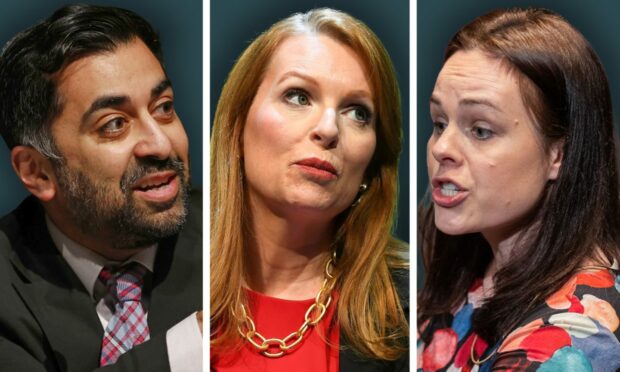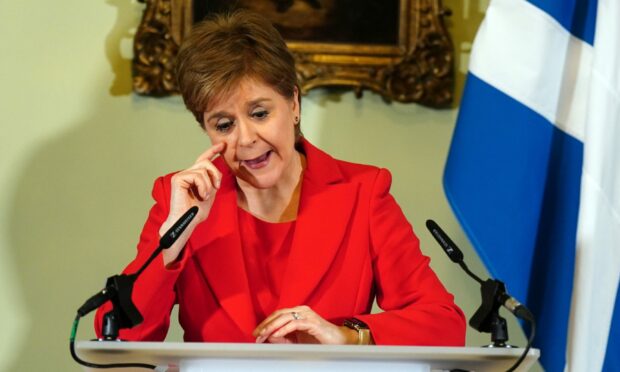The contest to take over from Nicola Sturgeon as first minister is at a crucial stage as voting closes for SNP members to cast their ballots.
Three candidates are competing for the top job, but there won’t be a national election to let the vast majority of Scots have a say.
Here’s all you need to know about who’s in the running, why there won’t be an election and what happens next.
Who is running?
Humza Yousaf emerged as the early frontrunner.
The health chief pitched himself as the continuity candidate.
He has been backed by senior party figures including deputy first minister John Swinney and SNP Westminster leader Stephen Flynn.
Highland Finance secretary Kate Forbes was seen as the first strong contender.
But her support base wobbled after they heard her admit she would have voted against gay marriage.
Polling indicates a strong number of party members still support her and she is more popular than Mr Yousaf with unionist voters.
Ash Regan is seen as the outsider candidate. She resigned from the government last October in protest against her party’s gender reforms.
Campaign highs and lows
Any signs of unity within the SNP crumbled during a bruising campaign.
Ms Forbes stunned party insiders with her attack on Mr Yousaf’s performance in government during the first televised debate.
The finance chief claimed the health secretary had failed in all his major posts and was responsible for record poor A&E waiting times.
Ms Regan slated the SNP for failing to dual the A9 and A96, and for shifting away from oil and gas too quickly.
None of the candidates has outlined a clear route to an independence referendum, months after Ms Sturgeon was effectively blocked by the Supreme Court.
If Ms Forbes or Ms Regan are successful, the SNP’s power-sharing agreement with the Greens in Holyrood could also fall by the wayside.
How many people are voting?
Even though the winner of the contest will be in charge of the whole country, only SNP members get to select the next first minister.
At its highest level in 2019 the party had more than 120,000 members, but the SNP was forced to admit it had lost 30,000 members since 2021.
This revelation lead to Peter Murrell, the party’s chief executive and husband of Nicola Sturgeon, and their communications chief Murray Foote resigning, as they had rubbished newspaper reports claiming this as inaccurate.
Will there be an election?
The SNP leadership contest is similar to last year’s Conservative contest, when Liz Truss and Rishi Sunak went head to head.
In that vote, only a tiny fraction of the UK population’s Tory members could decide who leads the party and, by default, the entire country.
It led to the chaos of Ms Truss in office for a few weeks before their second choice, Mr Sunak, stepped in again.
Despite SNP demands for an election during Tory leadership contests, all three contenders have ruled out a Scotland-wide vote if they win.
Voters will just have to wait until the next scheduled election, as it stands, in three years.
What happens next and when is the vote declared?
The candidates are taking part in more debates and members-only events in a bid to secure undecided party members.
Voting began at noon on March 13. After two weeks of voting, the party’s new leader will be announced on March 27 when ballots close.
To be confirmed as first minister, the new SNP chief will then need to receive the backing of Holyrood MSPs in a separate vote.
Greens are in a co-operation agreement with the SNP which means they are likely to side with them, particularly if Mr Yousaf wins.
But that could get interesting if Ms Forbes wins. She has socially conservative views which many in the Greens oppose.




Conversation